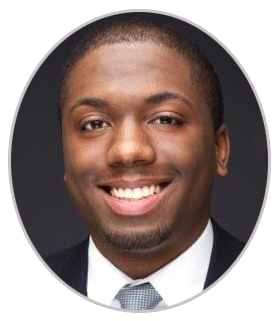
February 2, 2021
By Leonard “Lenny” Brown
Merriam Webster defines mecca as “a place regarded as a center for a specified group, activity, or interest.” The term is usually associated with a pilgrimage of some sort. For most golfers, the term surely conjures up thoughts and images of St. Andrews, Augusta National, Pebble Beach, or any other top golf course. Unbeknownst to many, there is a 9-hole course located in Scotch Plains, New Jersey which many African Americans considered the Mecca of Black golf in the 1900s, with a history as rich as any other.
Shady Rest Golf and Country Club. If you are unfamiliar with this name, you are not alone. Not many people have heard of this golf club. I just became aware of its existence over the summer when All Access Golf, a company started by Kelley Pierre (CEO), Winston Gordon (COO), and myself (CFO), held our annual golf outing there. What is so special about this little inconspicuous golf course in located Union County? Why should I care about it?
Well, the answer is multifaceted. This little 9-hole golf course located thirty miles west of New York City is the first African American Country Club in the United States and was the home of John Shippen, Jr., the first American-born golf professional. A Black Man. The golf course is now owned by the town and known simply as Scotch Hills Golf Course, but it was once a thriving Black-owned country club and focal point of African American middle-class society in the early 20th Century. Shady Rest Golf and Country Club is now a largely forgotten example of a time in history when Black people had to carve a niche in a space where we were actively barred from participating in.
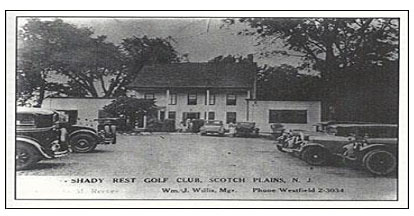
During the Segregation Era of American history, African Americans were prohibited from participating in many basic human liberties under the guise of the infamous “separate but equal” doctrine upheld by the landmark Plessy v. Ferguson U.S. Supreme Court Decision of 1896. Under this doctrine, services and facilities could be separated by race, on the premise that the quality of the segregated services and facilities were “equal”.
Separate But Equal
It was under this “separate but equal” judicial fallacy that in September of 1921, Progressive Realty Group, a group of Black investors, purchased a 31-acre plot of land known as the Westfield Golf Club and converted it into the Shady Rest Golf and Country Club. This purchase established Shady Rest as the first African American country club in the United States; a community for African Americans to enjoy recreational activities such as golf, tennis, horseback riding, and skeet shooting.
Shady Rest regularly held golf tournaments organized by the United States Colored Golf Association such as the first National Colored Golf Championship in 1925. It also held high-level tennis tournaments and was a frequent stop for Althea Gibson, a tennis great, and the first African American to win a Grand Slam title.
Sylvia Hicks, chair of the Preserve Shady Rest Committee, states that Shady Rest “created a way out of no way for a lot of Black people that wanted to play golf and tennis to live that life that they see that the white people were living.” By all accounts, Shady Rest was run and operated the same way as any prototypical country club – with applications and membership dues. According to Sylvia, membership was tiered. If you lived within a 50-mile radius, your membership dues were $20 and if you lived outside of 50 miles, your dues were only $10. Shortly after opening, the club was home to approximately 200 members.
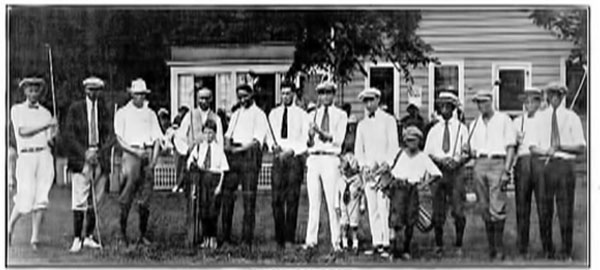
The geographical location of the club played an essential role in its early success. Located approximately thirty miles west of New York City, it was accessible to African Americans all throughout the Eastern seaboard.
African Americans traveled all over from New York, New Jersey, Pennsylvania, Boston, and as far south as North and South Carolina. The country club was also included in The Negro Motorist Green Book, named after Victor Hugo Green, a Black postal worker who published the first edition in 1936.
Following The Green Book
The Green Book, as it was colloquially known, was a Jim Crow Era guide that listed businesses that African Americans could patronize without facing overt discrimination. Due to its inclusion in The Green Book, the club became a beacon for Black entertainers and leaders such as W.E.B. DuBois, Billie Holiday, Duke Ellington, and Louis Armstrong, just to name a few; but it was a quiet groundskeeper from Washington, D.C. who may have been the brightest star of them all.
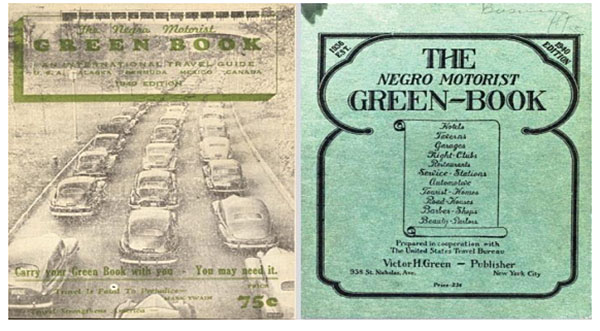
In 1931, John Shippen Jr. became the head professional golfer and groundskeeper for Shady Rest, a capacity in which he served for more than 30 years before retiring in 1964. John Shippen made history as the first American-born golf professional (Black or white) and the first American to compete at the U.S. Open at Shinnecock Hills on Long Island in 1896. Not only did he compete, but he came up one disastrous hole short of winning the title. On the 13th hole, he shot an 11 and eventually finished in 5th place. He went on to compete in four more U.S. Opens in 1899, 1900, 1902, and 1913.
Four years after retiring from Shady Rest, Mr. Shippen quietly passed away in a Newark nursing home at the age of 89. So quiet, in fact, that he was buried in Rosedale Cemetery in New Jersey without a headstone. His grave remained unmarked until Thurman Simmons, Chairman of the John Shippen Memorial Golf Foundation, raised enough money to place a headstone on his grave.
How does a man of such significance, who broke so many barriers, go so largely unknown? During a recent interview, I posed this question to Thurman and he simply responded – “It would set a lot of people back.”

Golf, along with many other things in our society, has long alluded the “Black grasp”. African Americans were barred from participating in this “White Man’s” sport. The PGA even evoked an official “Caucasian only” clause from 1934 to 1961 that “prevented non-whites from membership, and from competing on the PGA Tour.”
The remnants of this clause are still felt to this day with low minority interest, access, and participation in the sport. So, to recognize this man’s mere existence would contradict the longstanding racial tropes, stereotypes, and beliefs that are as intertwined in our society as the fabric of the American Flag. To recognize this man’s existence would shake the foundational core of the belief that this sport is inherently “white” when, in fact, the game of golf in America was pioneered by a Black Man.
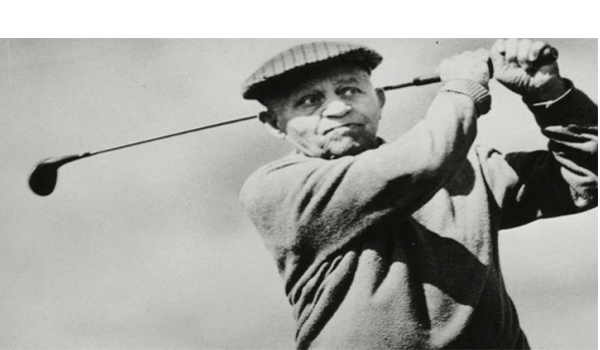 YOU MAY ALSO LIKE: John Shippen U.S. Postal Stamp Initiative
YOU MAY ALSO LIKE: John Shippen U.S. Postal Stamp Initiative
So where does Shady Rest stand now? Well, in 1938, the township of Scotch Plains acquired the Shady Rest property through a foreclosure. This took the club from Black-owned and operated, to simply Black operated. The township maintained the course until 1964 when it eventually took over operations and renamed the course to the Scotch Hills Golf Club, a public club. Today, the clubhouse of the original Shady Rest Golf Club still stands. What was once a beacon to Black golfers everywhere is now fighting to become a historical site. With the help of the Preserve Shady Rest Committee, an application has just been submitted to add the clubhouse to the National Register of Historical Places.
When asked what the Shady Rest Golf Club meant to her, President of the club, Sheenah Pergeron stated, “This course means a lot to me. It means more to me than just golf, this is our history.” She went on to state that the Shady Rest could be “cycle breaking” for many Black people. Sometimes, just being equipped with the knowledge that someone, who looks like you, created something extraordinary is all that you need. Representation matters.
So, to call Shady Rest Golf Club “The Mecca” is not hyperbole. In fact, I am selling its cultural significance short as it was home to many “firsts” in African American culture and the sport of golf in general. Shady Rest was the first African American Country Club in the nation. It was home to the first American-born golf professional, John Shippen; a Black man. It hosted cultural luminaries and icons such as Althea Gibson, Duke Ellington, W.E.B. DuBois, and Louis Armstrong. Its place in golf history should be recognized and honored.
100 Year Anniversary
This year is the centennial of the Shady Rest Clubhouse. For the 100-year anniversary, Shady Rest is planning a series of events in the fall of 2021. These events will consist of collaborations with Black authors and artists as well as social justice discussions and a golf outing. If you are an avid golfer or just someone who enjoys history, make the pilgrimage to Shady Rest Golf Club to see and feel the history for yourself.
If you would like more information regarding Shady Rest, please visit http://www.preserveshadyrest.org.
Also, please join All Access Golf on February 25th, 2021, for our “Blacks in Golf” virtual event where we further discuss the history of John Shippen and Shady Rest with Sylvia Hicks and Thurmond Simmons.
Sources:
-Preserve Shady Rest website, http://www.preserveshadyrest.org/
-Nelson, M. (2020, May 03) The Shady Rest Golf and Country Club (1921- ). Retrieved from https://www.blackpast.org/african-american-history/the-shady-rest-golf-and-country-club-1921/
-“Separate But Equal” https://www.law.cornell.edu/wex/separate_but_equal
-Giorgis, H. (2019, February 23) The Documentary Highlighting the Real Green Book. Retrieved from https://www.theatlantic.com/entertainment/archive/2019/02/real-green-book
-preserving-stories-ofjim-crow-era-travel/583294/ -Denney, B. (2020, October 5) PGA Professional John Shippen and the Preservation of a Pioneering Legacy. Retrieved from https://www.pga.com/story/pga-professional-john-shippen-and-thepreservation-of-a-pioneering-legacy

Leonard “Lenny” Brown holds a U.S. Kids Golf certification and is CFO of All Access Golf, a Brooklyn (NY)-based organization that increases the accessibility, relatability, and visibility for minorities in the sport of golf. Follow him on Instagram @lenny_b.

